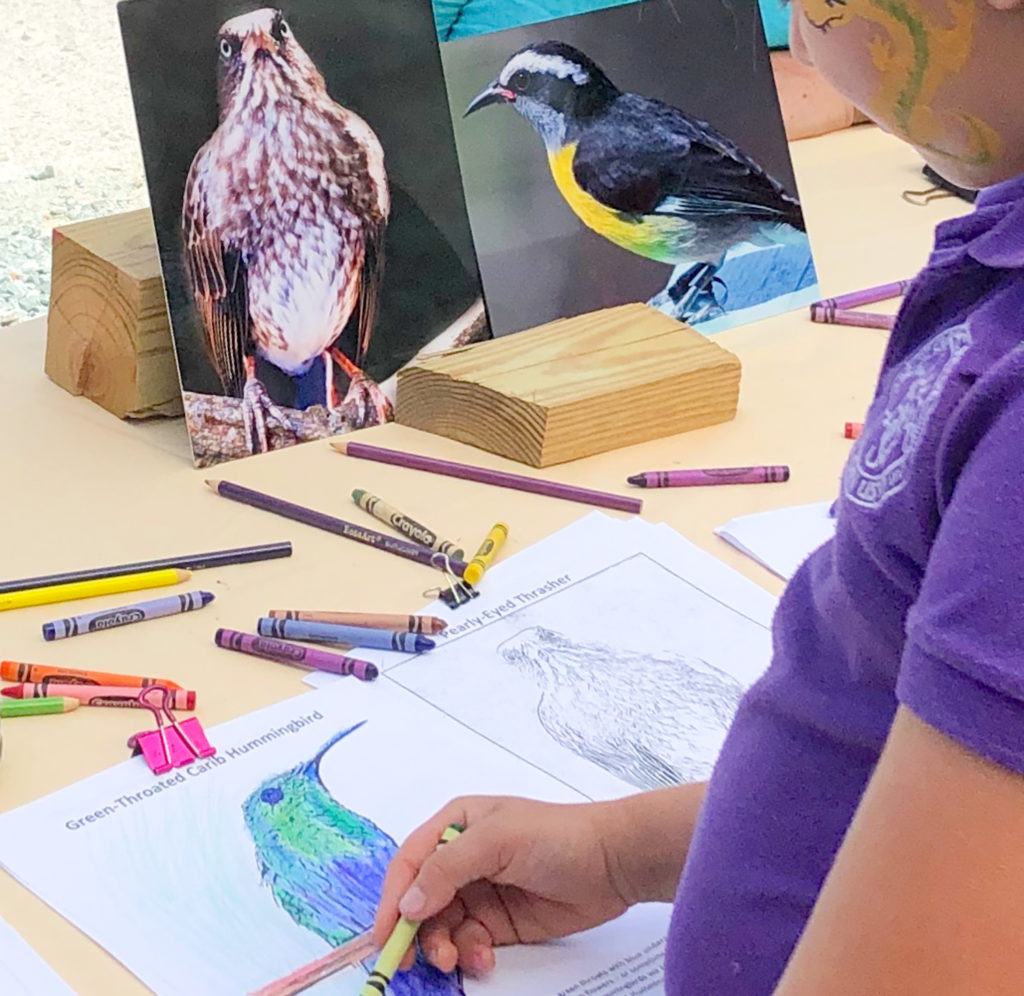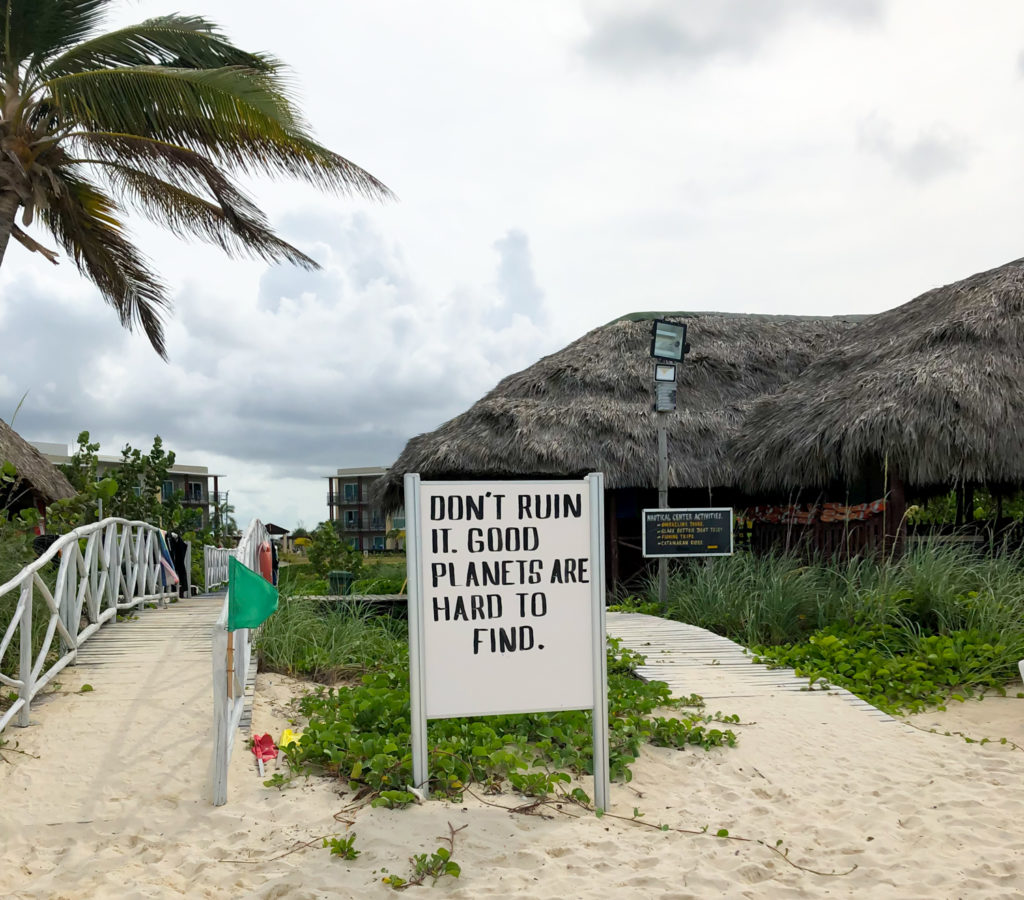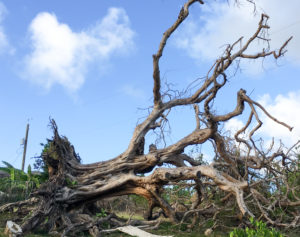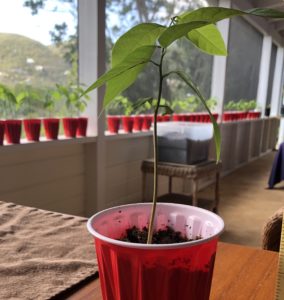
As Earth Day events have been cancelled in the Virgin Islands and around the world, can we find other ways to acknowledge this historic anniversary?
Maybe a good start would be to review what Earth Day was originally about, and consider what has changed over the past 50 years.
The idea of a national mobilization day to protect the earth came from Senator Gaylord Nelson of Wisconsin, in response to uncontrolled pollution from power plant emissions, industrial wastes, sewage runoff, oil spills and pesticides.
In January 1969, about 3 million gallons of crude oil was released off the coast of Santa Barbara, California, leaving an oil slick that spread over 35 miles. People across the country were shocked to see photos of thousands of birds and fish smothered in oil. The damage resulted from inadequate safety precautions by an oil drilling company. An explosion cracked the sea floor, and the flow of crude oil went on for over a month.
Another dramatic incident in June 1969 also captured the nation’s attention. The Cuyahoga River in Cleveland, Ohio, caught fire, with flames shooting up a hundred feet into the sky. What kind of river catches fire? The Cuyahoga, which empties into Lake Erie, was heavily polluted by industrial waste from manufacturing plants.
On April 22, 1970, about 20 million Americans (close to ten percent of the population then) participated in the first Earth Day. The event sparked an organized public environmental movement in the country, and by July 1970 President Nixon had proposed the formation of the U.S. Environmental Protection Agency. In December 1970, Congress passed the Clean Air Act, and the Clean Water Act was added in 1972.
So Earth Day was a great success, right?
Well, the environmental movement was strongly countered by industrial pushback. Over the past 50 years, there have been continued tensions between demands for unfettered economic development and efforts to maintain and expand environmental protections.
I was working as a lawyer at the U.S. Environmental Protection Agency in 1980 when President Reagan was elected. He promised to shrink government bureaucracy and free American businesses from what he viewed as unnecessary and burdensome regulations – especially environmental regulations. The agency was seriously weakened as a result.
Still, over time, national air and water pollution levels were brought down considerably.
Then in the 1990s a new global environmental threat came into focus. Scientists warned that the earth’s atmosphere was in danger of overheating due to the accumulation of carbon dioxide, methane, and other gases released by power plants, motor vehicles and industrial production processes. They explained that these ‘greenhouse gases’ trap heat near the earth’s surface, and that increasingly warmer temperatures would lead to global climate disruption, including droughts, fires, flooding, and more intense storms.

Earth Day took on a new significance as global greenhouse gas emission concerns began to overshadow local and national pollution problems.
In 1992, I was involved with the preparations for an international ‘Earth Summit’ organized by the United Nations, which resulted in several critical environmental agreements. One of them was the Framework Convention on Climate Change, which was agreed to by all countries, including the United States. It was signed by President Bush, Sr. and ratified by the U.S. Senate.
However, the United States has not supported many of the subsequent international initiatives designed to prevent or reduce the predicted damage to the earth’s climate. Industries that would be negatively affected by regulations to limit greenhouse gas emissions (like fossil fuel companies) have argued that the economic costs and disruptions would be too extreme. Meanwhile, some of the predicted effects from climate change are already being seen in many parts of the world.

This year the organizers of Earth Day hoped for another historic moment when citizens everywhere would rise up to call for greater creativity, bravery and action on averting a catastrophic climate crisis.
Ironically, today the world is, in fact, bound together for a shared historic moment, as the coronavirus pandemic has completely disrupted business-as-usual in unimaginable ways, and most of us are confined to our homes.
Yet while we are concentrating on the current health threats, this crisis does provide us with an unexpected opportunity to rethink our lives and priorities.
I was preparing for Earth Day this year by raising tree seedlings to be distributed through a project organized by the Friends of the Virgin Islands National Park. The idea was to help people who lost trees (and maybe also houses) to be able to do some replanting. Since the pandemic, I have also started planting vegetables for a quarantine garden.

Germinating seeds and nurturing small sprouts requires patience as well as vigilance. I have had to protect them from deer and iguanas, and have been amazed by all the types of damaging insects they attract. Successfully producing food is actually quite miraculous, and cannot be taken for granted.
Although this may not be the right moment for mass mobilization gatherings to demand action on climate change, there are many online ways we can support climate protection and local conservation projects. Meanwhile, those of us lucky enough to be safe in our homes can reflect on how closely all of us on the earth are linked to each other, and how dependent we are on a healthy, functioning planet for our food and other survival needs.
Gail Karlsson is an environmental lawyer, writer and photographer – author of The Wild Life in an Island House, plus the guide book Learning About Trees and Plants – A Project of the Unitarian Universalist Fellowship of St. John. See uufstjohn.com/treeproject and gvkarlsson.blogspot.com. Follow her on Instagram @gailkarlsson





